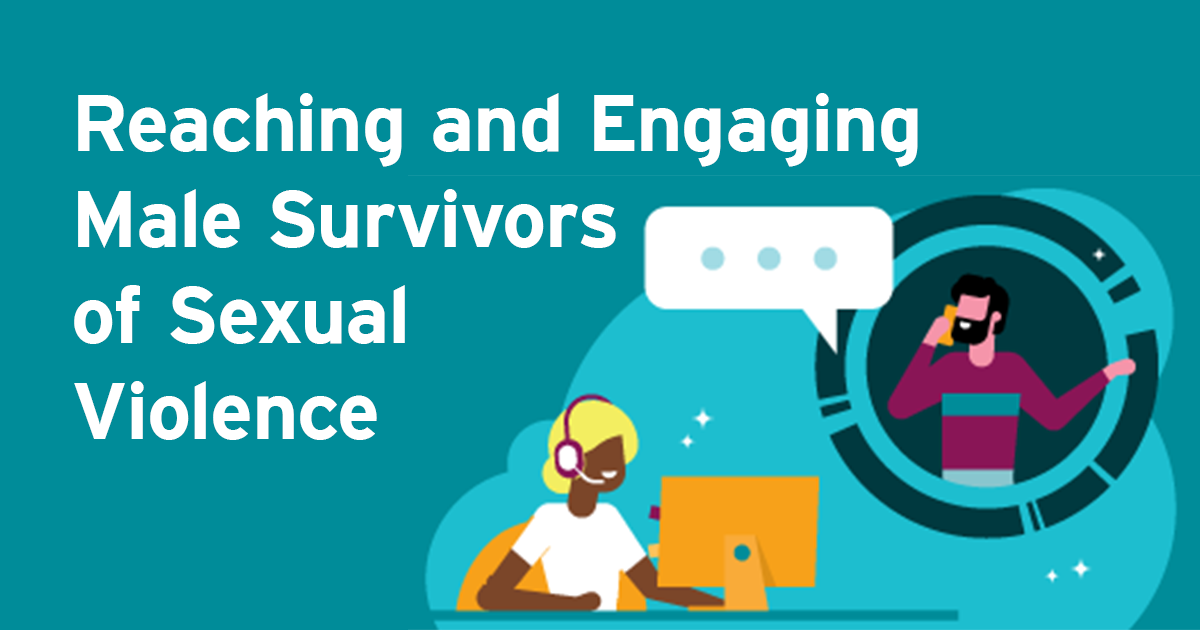

“Victim” and “survivor” can be words that men don’t relate to, despite their experiences. This may be the case for a person of any gender, but aspects of male socialization in particular make this language particularly distant. There is not a one-size-fits-all approach to choosing what language to use in reaching men in your community. It’s important when engaging with men that identifying terms like victim, survivor, and perpetrator are self-chosen by each individual and that advocates reflect back the language they use.
In our field, it is rare to talk about men and sexual violence in a way that leaves open the possibility of men having been victimized. We mostly hear about men as someone who has perpetrated violence or men as people to engage in the efforts to prevent sexual violence. These are important topics, but we need careful attention to our language and messages to include the additionally important topic of male survivors. 1in6 has shifted to using the term “unwanted sexual experiences” in trying to reach men for healing.
One of the settings where this is most relevant is when our centers provide education in the community about sexual violence. The language we use when we provide training should include the possibility that men in the room, and men connected to people in the room, may have experienced unwanted sexual contact.
Sexual assault centers must serve all survivors. But knowing this is only a surface-level standard that means very little if centers fail to ensure that everyone who is part of the agency understands and practices that commitment. Consider everyone from board members to staff, and community partners. Then convey this commitment to the general public. Is it part of your center’s reputation to be a place that men go for healing? The tools in this section can help advocates consider how to make sure this is the case.
In trying to reach men, remember that men may have the expectation – based on assumption or past experience – that the center is not a place where they can go to receive services. Also keep in mind that men may have predominantly received social service as part of a consequence in their life (for example, being court-ordered to receive a service), and may have a negative association with the idea of going to an office to talk about their lives.
One barrier to serving men might be that a sexual assault center doesn’t see certain instances of unwanted sexual experiences as being violent, like bullying, initiation, ritual, or hazing. The May 2018 roundtable on working with male survivors suggested that centers can reach men by sometimes using gender-specific language. Using gender-neutral language is also good when speaking generally about services, but mixing in gender-specific language can be a direct way to let men know that the center is a place where they can go for healing.
Roundtable participants also identified having male staff members and volunteers, hosting focus groups and agency walkthroughs, having male survivor specific content on your website, and doing outreach where men congregate in the community as key aspects of reaching male survivors. Continue getting to know the people and groups in your community, and find out what language works for them. Use a mix of language to try and reach people who respond to different terms.
Our outreach materials and facilities should also reflect that men are people who might use the services available at a sexual assault center. Consider agency name, photos, online messages, colors, etc. Sexual assault centers who are considering changing their name or moving away from a gendered name can lead to thinking very broadly about how a program wants to be known in a community and how to better reflect who they are and who they want to be, including considering male survivors.
NSVRC’s Resources on Working with Male Survivors
Assessing Our Capacity for Serving Male Survivors of Sexual Violence - Assessment tool
Sexual assault advocates and rape crisis centers can use this self-assessment tool to reflect on your current work serving men who have had unwanted sexual experiences. The tool offers reflection questions related to individual and organizational capacity to serve male survivors.
Lessons on Serving Male Survivors Through Sexual Assault Services Program - Print publication
A resource containing lessons learned from sexual assault services programs with comparatively high percentages of male survivors served with that funding stream. An accompanying blog series highlights in more depth what programs told us about their work: see blog one, blog two, and blog three.
How We Talk About Working with Male Survivors of Sexual Assault, Harassment, and Abuse - Print publication
This resource suggests how you can communicate about sexual violence as something that men experience and about what services are available for survivors, including men.
Working with Male Survivors: Economic Barriers Behind Bars - Podcast
Tonjie Reese, Senior Program Officer at Just Detention International, talks about working with male survivors who are incarcerated. Tonjie highlights economic barriers and racial justice issues, and shares tips for advocates on hotline services, reaching survivors through inmate education efforts, and more.
Working with Male Survivors: Reaching Male Survivors Through Storytelling - Podcast
Emiliano Diaz de Leon joins us for a conversation on the Texas Men’s Story Project and how sexual assault programs can use the project as a model for reaching male survivors. Emiliano is the Men’s Engagement Specialist at TAASA, the Texas Association Against Sexual Assault.
Working with Male Survivors: When Reaching Male Survivors, Consider Your Program’s Name - Podcast
Geoff Landers-Nolan, Sexual Assault Counselor and Therapist at Centre Safe in Pennsylvania, addresses reaching male survivors. The discussion focuses on considering a sexual assault program’s name in being accessible to male survivors.
Additional Resources:
Bristlecone Project - Awareness campaign
1in6’s Bristlecone Project is a documentary film featuring male survivors telling their stories of healing from sexual violence. The film is available for communities to use as a screening, community discussion, and teaching aid.
Did you know? - Video
This 2020 public service announcement from MenHealing focuses on raising awareness that people have male survivors of sexual violence in their lives, and emphasizes healing and breaking stereotypes.
Helping Those Who Help Others Needs Assessment Report - Report
This 2020 report shares findings from an assessment of the crime victims field and related fields on understanding why some victims are not receiving services. The report includes a summary of findings such as the desire victim services providers have for information and guidance on how to reach more people, many survivors fear and mistrust mainstream victim service programs, and barriers faced by underserved communities.
Increasing Access to Healing Services and Just Outcomes for Older African American Crime Survivors: A Toolkit for Enhancing Critical Knowledge and Informing Action within the Crime Victim Assistance Field - Toolkit
This 2020 toolkit for victim service providers offers information and practical strategies to identify, reach, and serve older African American victims, including male survivors of sexual violence. The toolkit includes a guide with five content modules that have video clips, and a workbook.
Male Survivors of Sexual Assault - Brochure
This brochure by Texas Association Against Sexual Assault includes information like: facts about men and rape, typical reactions during and after a sexual assault, and issues that may be specific to men. It is also available in Spanish.
Reaching Latino Male Survivors of Sexual Violence - Webinar
This 2018 webinar by the National Latin@ Network addresses considerations to enhance outreach to Latino male survivors of sexual violence. It includes information on cultural barriers and solutions to overcoming those barriers, and effective outreach materials and strategies.
Reaching Out to Male Survivors of Violence - Report
This 2018 brief from Healing Justice Alliance addresses outreach and engagement best practices for organizations working with male survivors of violence, especially boys and men of color. It explores recommendations like hiring individuals with the lived experience, providing culturally appropriate services, engaging family and community members, and meeting young men where they’re at.
Speak Up, Speak Out - Video
This 2017 video from the Texas Association Against Sexual Assault’s public service announcement Speak Up, Speak Out features Jorge, talking about being a survivor of rape.
Survivors of Sexual Abuse and Assault Reveal an Important Truth - Video
This 2018 public service announcement from 1in6 seeks to expand perceptions of who are survivors of sexual violence. It challenges masculinity myths and addresses sigma and lack of services for male survivors.
Texas Men’s Story Project - Videos
This video series was a collaboration between the Texas Association Against Sexual Assault (TAASA) and the Men’s Story Project. The stories were recorded during the live event “The Texas Men’s Story Project: Telling Our Truths” in September 2020, and several of the men identify as survivors of sexual violence.
For more information please email resources@nsvrc.org
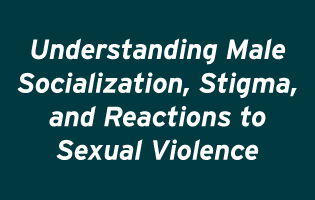 |
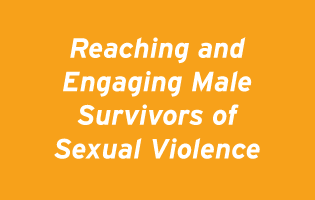 |
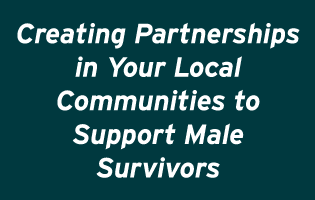 |
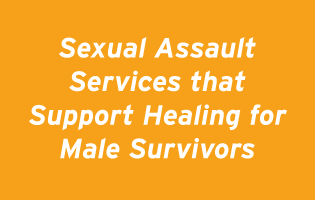 |
 |
 |
 |
 |

